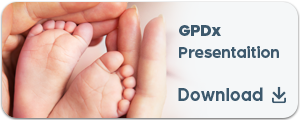Niles, K. M., Blaser, S., Shannon, P., & Chitayat, D. (2019). Fetal arthrogryposis multiplex congenita/fetal akinesia deformation sequence (FADS)-Aetiology, diagnosis, and management. Prenatal diagnosis, 39(9), 720–731. https://doi.org/10.1002/pd.5505
Bamshad, M., Van Heest, A. E., & Pleasure, D. (2009). Arthrogryposis: A review and update. Journal of Bone and Joint Surgery, 91(Supplement_4), 40-46. doi:10.2106/jbjs.i.00281
Ravenscroft, G., Clayton, J. S., Faiz, F., Sivadorai, P., Milnes, D., Cincotta, R., Moon, P., Kamien, B., Edwards, M., Delatycki, M., Lamont, P. J., Chan, S. H., Colley, A., Ma, A., Collins, F., Hennington, L., Zhao, T., McGillivray, G., Ghedia, S., Chao, K., … Davis, M. R. (2020). Neurogenetic fetal akinesia and arthrogryposis: genetics, expanding genotype-phenotypes and functional genomics. Journal of medical genetics, jmedgenet-2020-106901. Advance online publication. https://doi.org/10.1136/jmedgenet-2020-106901
Farmakidis, C., Pasnoor, M., Barohn, R. J., & Dimachkie, M. M. (2018). Congenital Myasthenic Syndromes: a Clinical and Treatment Approach. Current treatment options in neurology, 20(9), 36. https://doi.org/10.1007/s11940-018-0520-7
Rodríguez Cruz, P. M., Palace, J., & Beeson, D. (2018). The Neuromuscular Junction and Wide Heterogeneity of Congenital Myasthenic Syndromes. International journal of molecular sciences, 19(6), 1677. https://doi.org/10.3390/ijms19061677
Finsterer J. (2019). Congenital myasthenic syndromes. Orphanet journal of rare diseases, 14(1), 57. https://doi.org/10.1186/s13023-019-1025-5
Engel A. G. (2018). Genetic basis and phenotypic features of congenital myasthenic syndromes. Handbook of clinical neurology, 148, 565–589. https://doi.org/10.1016/B978-0-444-64076-5.00037-5
Engel A. G. (2018). Congenital Myasthenic Syndromes in 2018. Current neurology and neuroscience reports, 18(8), 46. https://doi.org/10.1007/s11910-018-0852-4
Abicht, A., Müller, J., S, & Lochmüller, H. (2003). Congenital Myasthenic Syndromes. In M. P. Adam (Eds.) et. al., GeneReviews®. University of Washington, Seattle.
Hall, J. G. (2014). Arthrogryposis (multiple congenital contractures): Diagnostic approach to etiology, classification, genetics, and general principles. European Journal of Medical Genetics, 57(8), 464-472. doi:10.1016/j.ejmg.2014.03.008





